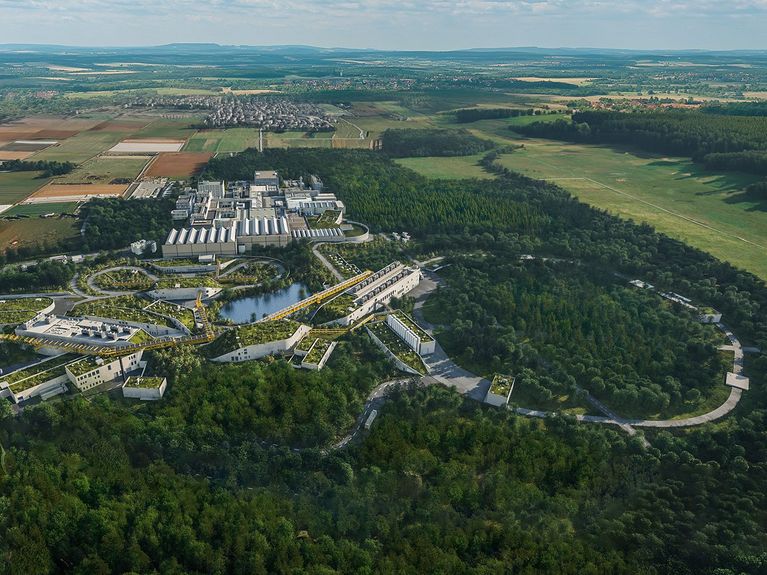
Story #08
The Universe in a Laboratory – the New Particle Accelerator Center FAIR
At the GSI Helmholtzzentrum für Schwerionenforschung in Darmstadt, the Helmholtz Association is making one of the world’s most ambitious research initiatives for international collaboration a reality: the new accelerator center FAIR, where researchers will gain new insights into the structure of matter and evolution of the universe, from the Big Bang to the present.
The new accelerator center FAIR (Facility for Antiproton and Ion Research) will pave the way for unique research and revolutionary new findings – on e.g. the nature of matter and our universe: in large planets, stars, stellar explosions and collisions, matter is subjected to extreme conditions, like extremely high temperatures, pressures or densities. At FAIR, scientists will be able to recreate precisely these conditions in the lab. To do so, they will bombard small samples of material with ions – electrically charged atoms. The result: for a brief moment, cosmic material is produced at the minuscule impact site.
That being said, macroscopic effects in materials and fibers, as well as applications to engineering and medicine, will also be research focus areas at the accelerator in Darmstadt, e.g. in connection with tumor therapies and aerospace. In this way, FAIR will open the door for innovative, bleeding-edge technologies to address a range of pressing questions society now faces.
FAIR Trailer: The Particles' Journey throught the Accelerator Facility
Once completed, the FAIR particle accelerator will be one of the largest and most complex facilities of its kind, capable of producing ion beams of all chemical elements, as well as antiprotons. To do so, particles will be accelerated to near-light speed before being introduced into scientific experiments. FAIR will generate particle beams of unparalleled intensity and quality.
The center is one of the most extensive construction projects for leading international research. The 150,000-square-meter complex will be home to 25 individual structures, including a subterranean accelerator ring with a circumference of 1,100 meters and other unique components for the newly developed high-tech resources.
FAIR will receive financial backing from the GSI Helmholtzzentrum für Schwerionenforschung, its largest shareholder, and be constructed as a joint international effort; international scientific and technical institutes based in the nine shareholding countries, and a host of further partner countries, will pool their resources. Today, roughly 3,000 scientists from more than 50 countries are working on the planning and implementation of FAIR’s research agenda and resources for scientific experiments.
As a result, FAIR has already become a virtual magnet for cultivating talent and know-how. Its experts work closely together with other research centers from the Helmholtz Association, and with universities, to train the next generation of leading minds in science and engineering.
Picture: GSI/FAIR